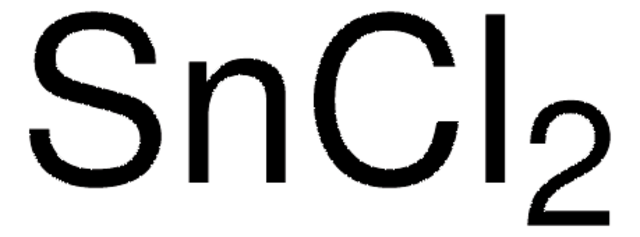467901
Nickel(II) sulfate hexahydrate
≥99.99% trace metals basis
About This Item
Produits recommandés
Qualité
for inorganic trace analysis
Niveau de qualité
Densité de vapeur
2.07 (vs air)
Essai
≥99.99% trace metals basis
Forme
solid
Impuretés
≤0.002% N compounds
≤0.005% insolubles
<100 ppm total metallic impurities
Traces d'anions
chloride (Cl-): ≤0.001%
Traces de cations
Ca: ≤0.005%
Co: ≤0.002%
Cu: ≤0.005%
Fe: ≤0.001%
K: ≤0.01%
Mg: ≤0.005%
Mn: ≤0.002%
Na: ≤0.05%
Chaîne SMILES
O.O.O.O.O.O.[Ni++].[O-]S([O-])(=O)=O
InChI
1S/Ni.H2O4S.6H2O/c;1-5(2,3)4;;;;;;/h;(H2,1,2,3,4);6*1H2/q+2;;;;;;;/p-2
Clé InChI
RRIWRJBSCGCBID-UHFFFAOYSA-L
Vous recherchez des produits similaires ? Visite Guide de comparaison des produits
Description générale
Application
- Improvement of ion chromatography with ultraviolet photometric detection and comparison with conductivity detection for the determination of serum cations.: This study explores advanced ion chromatography techniques for analyzing serum cations, where Nickel(II) sulfate hexahydrate may be used as a standard or in method development. The research compares ultraviolet photometric detection with conductivity detection, enhancing analytical methods for precise cation analysis in various samples, which can be crucial for environmental and clinical chemistry (Shintani H, 1985).
Mention d'avertissement
Danger
Mentions de danger
Conseils de prudence
Classification des risques
Acute Tox. 4 Inhalation - Acute Tox. 4 Oral - Aquatic Acute 1 - Aquatic Chronic 1 - Carc. 1A Inhalation - Muta. 2 - Repr. 1B - Resp. Sens. 1 - Skin Irrit. 2 - Skin Sens. 1 - STOT RE 1 Inhalation
Organes cibles
Respiratory Tract
Code de la classe de stockage
6.1D - Non-combustible acute toxic Cat.3 / toxic hazardous materials or hazardous materials causing chronic effects
Classe de danger pour l'eau (WGK)
WGK 3
Point d'éclair (°F)
Not applicable
Point d'éclair (°C)
Not applicable
Faites votre choix parmi les versions les plus récentes :
Déjà en possession de ce produit ?
Retrouvez la documentation relative aux produits que vous avez récemment achetés dans la Bibliothèque de documents.
Les clients ont également consulté
Notre équipe de scientifiques dispose d'une expérience dans tous les secteurs de la recherche, notamment en sciences de la vie, science des matériaux, synthèse chimique, chromatographie, analyse et dans de nombreux autres domaines..
Contacter notre Service technique












